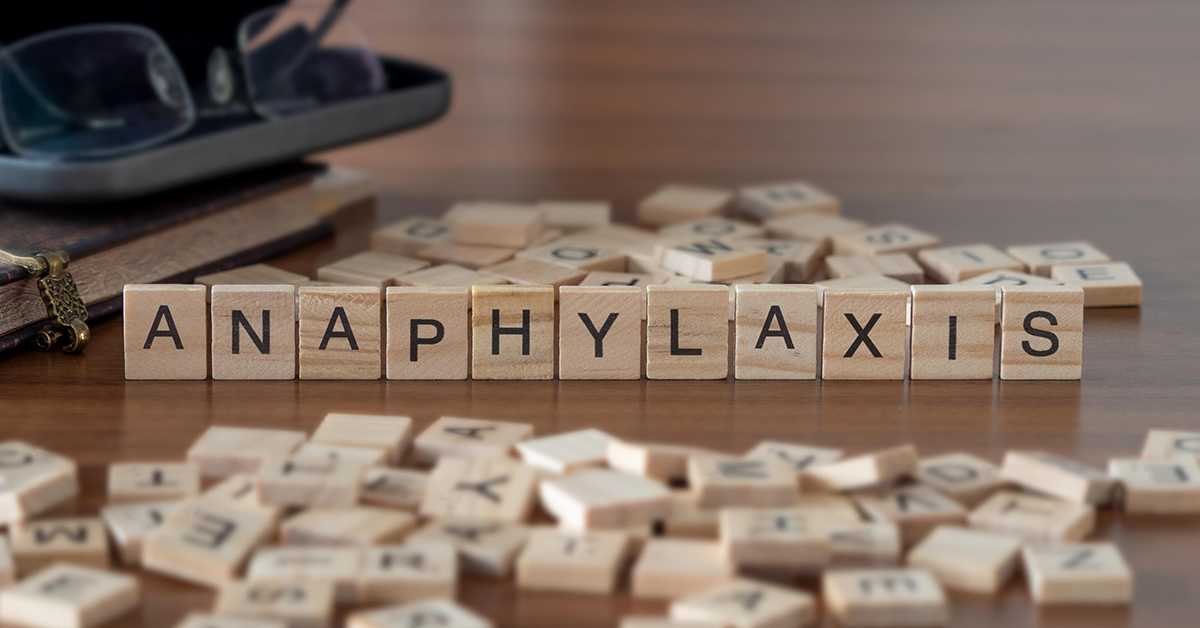
Have you ever found yourself in a situation where a loved one had a severe allergic reaction (anaphylaxis) and you did not know how to help? It indeed is a terrifying situation to be in.
In the United States, over 1500 lives are lost each year to this extremely dangerous medical emergency, however, knowing anaphylactic shock first aid is a basic life skill and it is wise to always be prepared.
Anaphylaxis is a life-threatening form of an allergic reaction, characterized by the immune system’s overreaction to an allergen by producing an excessive amount of chemicals that override the body. Occurring within 20 minutes to 2 hours of exposure to the allergen, this reaction develops into an anaphylactic shock where the blood pressure drops, and the airways narrow (causing lowered oxygen supply), putting the individual’s life at risk.
If anaphylactic shock first aid is not provided timely, the situation could evolve into irreversible brain, heart, or kidney damage, and even death.
The cause of allergy varies from person to person, which is why identifying what you are allergic to is crucial during early childhood.
Before delving into the anaphylactic shock first aid, it is important to know when someone is in anaphylactic shock. While it may begin with common symptoms like a runny rose, sneezing, coughing, or a skin rash, it quickly evolves into one or more of the following:
The onset of these symptoms and their order varies from person to person but a couple of these should be enough to identify an anaphylactic shock before proceeding to an anaphylactic shock first aid.
If left unidentified, these symptoms would be followed by more severe ones such as dizziness, confusion, weakness, loss of consciousness, and an ever-increasing inability to breathe.
The only remedy for an anaphylactic shock is epinephrine (adrenaline) which is readily available in pre-filled injections/pens, such as EpiPen or Auvi-Q. Injecting the pen is the first and most important step of anaphylactic shock first aid. Epinephrine reopens your airways, raises anaphylactic shock blood pressure and reverses other symptoms in a matter of minutes.
Obtained via prescriptions, most people with a high risk of anaphylaxis always carry a pen with them. It is advisable to ask the individual if they have one, and if they do not, try to arrange one. If they can inject it themselves, help them do so. Otherwise, follow the instructions on the back of the pen and press the injector into their thigh.
The general guideline for adults less than 50kg is 300 micrograms of epinephrine, and 500 micrograms for those over. It is advisable to note the time it was injected as that information may be crucial for the ambulance crew.
Contrary to public perception, antihistamines are not a component of anaphylactic shock first aid. While they may ease the inflammatory symptoms, they do not target the root cause of shock, and administering these, along with glucocorticosteroids, is the responsibility of a doctor when the patient is taken to the hospital.
Most importantly, if no epinephrine is available, proceed to the next step and call the ambulance. It is advisable to not administer any oral medications and seek medical help immediately.
Regardless of whether epinephrine was administered or not, and whether the symptoms have alleviated, calling 911 or your local emergency number is the next step of anaphylactic shock first aid procedures. While a lot of people believe this should be the first thing to do, administering adrenaline is the most important step since you must not wait for the situation to aggravate.
Even if the individual has fully recovered after a shot of epinephrine, it is essential to seek medical treatment and remain under observation for at least four hours. There is a possibility of them relapsing into a secondary reaction that could be lethal.
If the patient is conscious, reassure them until the emergency services arrive and when they do, hand over the autoinjector you used so they know what interventions have already been performed during the anaphylactic shock first aid.
An important step of anaphylactic shock first aid is moving the patient into a position known as ‘shock position’. Since the blood flow of the body is at the risk of being compromised, you want to reduce the burden on the heart as much as possible. This is done by lying the individual down on their back and elevating their limbs, so the blood flow is redirected from the limbs to the more important organs such as the brain and lungs.
This is not a hard and fast rule because some situations would require you to improvise.
For example, if the patient is having trouble breathing, it is recommended they sit up straight with outstretched legs rather than lying on their back so that they can inspire more air due to gravity. Moreover, if they are unconscious, you would want to turn them on their side so that they do not choke on their vomit.
Under no circumstances, however, should you let the patient stand and move around, as there is a risk of them falling and sustaining another injury.
In an anaphylactic shock, blood pressure and airway are at a high risk, which is why the final component of anaphylactic shock first aid is monitoring the casualty’s vitals if they are unconscious. While you are waiting for emergency services, assess the pulse of the patient and if it disappears, immediately begin CPR to revive them.
See Also: How Often Does Adhd Co-Occur With Bipolar Disorder?
Now that you are familiar with the anaphylactic shock first aid procedures, you should be able to help anyone in need. If you or your loved ones have had an anaphylactic reaction in the past, suffer from severe allergies or respiratory problems such as asthma, or have a family history of anaphylaxis, it is advisable to carry EpiPens with you at all times. You never know when you might need them.